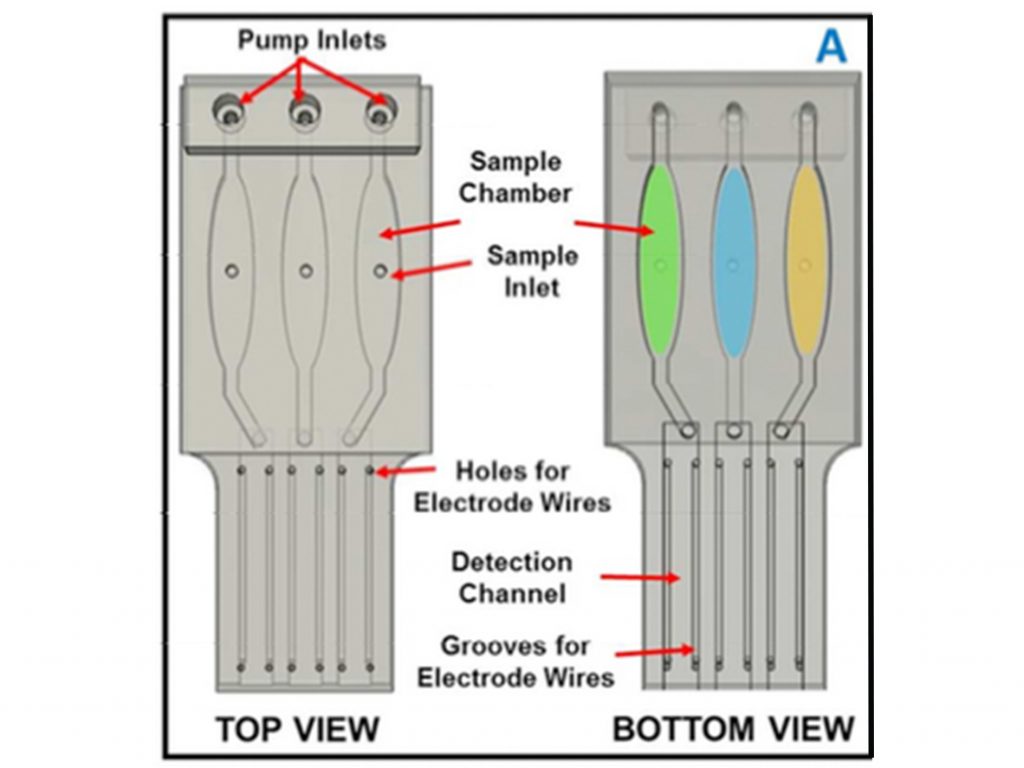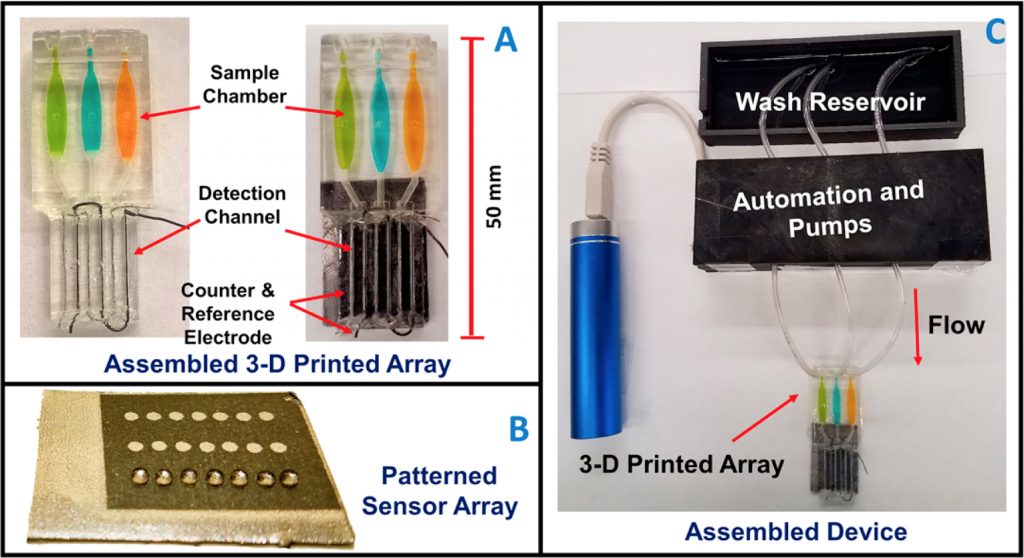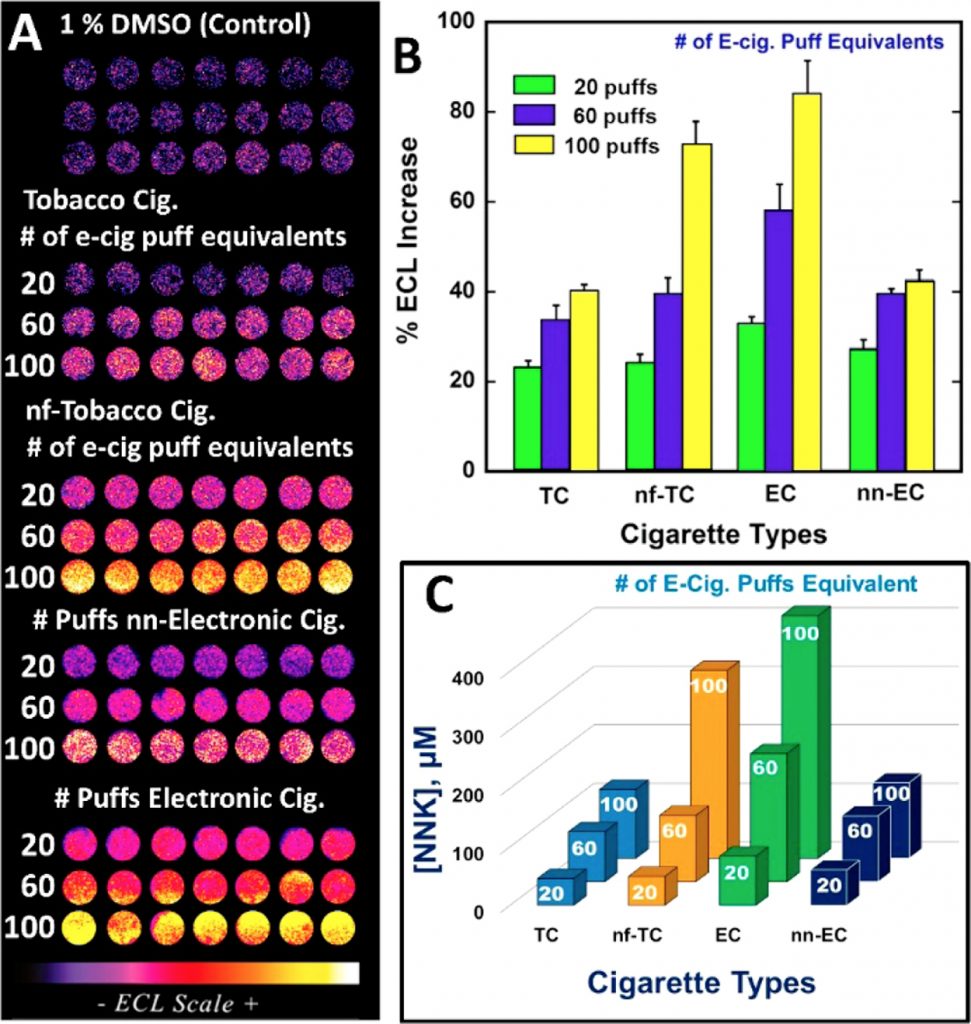A 3D printed microfludic device developed by chemists at the University of Connecticut (UConn) has uncovered new information on the toxicity of nicotine-based liquids used in e-cigarettes. The device is capable of testing the damage that nicotine does to human DNA, and was used to raise awareness of the potential harm caused by vaping.
Lab equipment the size of a microchip
In experiments, a microfludic device was created as a ‘lab on a chip’, i.e. a scaled-down version of a process typically found in a research laboratory.
The device measures the reaction of substances mixed inside the chip’s hollow channels. By reducing experiments to the size of a microchip researchers require only a small amount of material for tests. When working with valuable samples such as stem cells, the cost savings make microfluidic chips an increasingly attractive approach for application in drug testing, and disease diagnosis.
3D printing is increasingly becoming a cost-effective way to design and perform such experiments.

In this study from UConn, researchers 3D printed a simple, cost-effective microfludic array with three separate channels. Each of these channels is laden with a film, built up in layers of animal DNA, male human liver microsomes, and a stimuli responsive gel that signifies a change in the conditions inside the channel.
Toxicology testing for 80 cents per piece
The device was 3D printed in resin on a Formlabs Form1+ SLA machine at a cost (including active samples) of $0.80 per piece. To read the results, the chip is plugged in to a reusable, automated platform of controllers, pumps and a battery. These cost approximately $150 to put together.

With this system the researchers demonstrated the ability to test 21 devices all at the same time, with the added possibility of scaling up to accommodate a wider sample group.
When activated, tubes attached to the array pump in a stream of smoke, or vapour, extracted from one of four types of cigarette: tobacco cigarettes (TC), e-cigarettes (EC), nonfiltered (nf) and non-nicotine (nn). Within 5 minutes an electrochemiluminescent (ECL) reading of the reaction can be read from the device. This ECL reading gives details of the carcinogenic, i.e. potentially cancer-inducing, content of DNA inside the channels, on a sliding scale equivalent to 20, 60 and 100 puffs of a single cigarette.
As harmful to DNA as typical tobacco cigarettes
Comparisons show that the level of carcinogenic NNK in e-cigarettes matches, and in fact surpasses the levels gathered from typical tobacco cigarettes.

Speaking to Colin Poitras for UConn Communications Karteek Kadimisetty, lead author of the UConn study, states,
From the results of our study, we can conclude that e-cigarettes have as much potential to cause DNA damage as unfiltered regular cigarettes.
In addition, Kadimisetty and his team also demonstrate the device’s efficiency at detecting pollution levels in water. In a related application, 3D printing has also proved useful in creating inexpensive sensors that can be used as trigger warnings in natural disasters.
With the design flexibility afforded by 3D printing, other microfluidic devices have been created in studies to promote lab on chip’s adoption throughout medicine, and to create faithful representation of small vessels found inside the body.
The academic paper, Automated 3-D Printed Arrays to Evaluate Genotoxic Chemistry: E-Cigarettes and Water Samples, discussed in this article is published online ACS Sensors journal. It is co-authored by Karteek Kadimisetty, Spundana Malla and James F. Rusling, attributable to the University of Connecticut, the Connecticut Institute of Material Science, UConn Health and the National University of Ireland at Galway.
Let us know your views on this use of 3D printing the comments below.
For all the latest 3D printing news subscribe to our free newsletter. If you want to join the conversation then follow the most popular social media accounts in the 3D printing industry.
Featured image: Postdoctoral researcher Karteek Kadimisetty holds the 3D printed chip of the toxicity testing device. Photo by Peter Morenus for UConn



